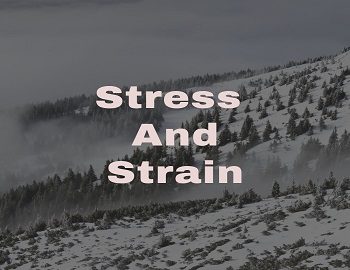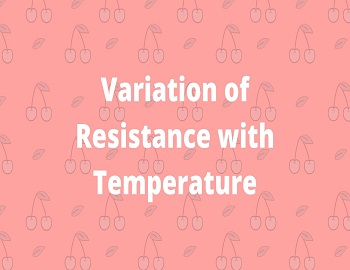Table of Contents
Stress And Strain:
Stress:
All material bodies are composed of molecules and these molecules are held together by the molecular forces of attraction. Normally, the molecules occupy specific positions. When an external force acts upon a body, the distance between the molecules changes. On stretching a body, its molecules are pulled apart. On compressing a body, its molecules are brought closer. In any case, the relative displacement of various parts takes place. The displaced particles tend to return to their positions. Thus, a restoring force is called into play within the body which tends to bring the body back to its original shape, size or volume of the body. The restoring force per unit area which comes into play inside the body and opposes the deformation caused by the external force is called stress. Stress is also defined as a restoring force acting upon the body on its unit area. It is measured by the ratio of the applied force (F) to the cross-sectional area of the body.
Thus, Stress = F/A
The reaction set up in the body in accordance with Newton’s third law of motion is equal and opposite to the applied force as long as there is no permanent change in the body. For instance, if a wire having an area of cross-section a square centimetre is acted upon or stretched by a force of F dyne, then stress is evaluated as-
Stress = F/a dyne per square cm
Evidently, the units of stress in the C.G.S. system is dyne/cm2 while in the S.I. or M.K.S. system, the units of stress are N/m2 (Newton/sq. metre).
The term stress refers to the internal force (restoring force) created within the body as a result of the application of external deforming force. The force (F) applied normally per unit area of cross-section (a) is also referred to as longitudinal stress.
Strain:
If an external force acts upon a body, it causes the relative displacement of its various parts. As a result of this, a change in length, volume or shape of the body takes place. Under such circumstances, the body is said to be under a strain. Strain produced by an external force is defined as the ratio of the change in length or volume to the original length, or volume, respectively. In other words, strain is defined as the change in dimension per unit dimension of the body. The deformation produced in a body is of three types as under-
Longitudinal Strain:
In this case, a change in the length of the body takes place. The strain involved is referred to as a longitudinal strain. The longitudinal strain is measured by the change in the length per unit length. Thus, a longitudinal strain is expressed as-
Longitudinal strain = l/L
where ‘l’ is the change in length produced and ‘L’ is the original length.
Longitudinal strain has no unit as it is a ratio.
Volumetric Strain:
In this case, the change takes place in the volume of the material, the strain involved is known as volumetric strain. The volumetric strain is measured by the change in volume per unit volume. Hence, a volumetric strain is represented as-
Volumetric strain = ν/V
Where ‘ν’ is the change in volume produced and ‘V’ is the original volume. The volumetric strain has no unit as it is a ratio.
Shearing Strain:
In this case, a change in the shape of the body takes place. The strain generated by an external force is called a shearing strain. The shearing strain is measured by the ratio of the relative displacement of one plane to its distance from the fixed plane. Evidently, a shearing strain is purely a ratio of two quantities having the same unit.









Comments (No)